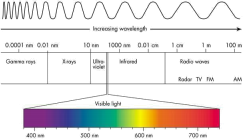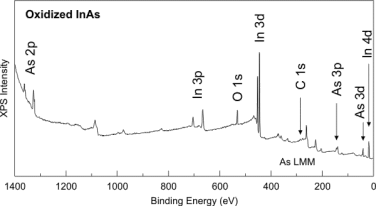ENGR 145 Practice 2
Hello, dear friend, you can consult us at any time if you have any questions, add WeChat: daixieit
1) Which of the following photons from each pair has a higher energy? Try to solve it first without any calculations, and then calculate the E to confirm your answer. For parts e-f use the energy spectrum below.
a. λ = 400 nm or λ = 400 pm
b. λ = 150 nm or λ = 600 nm
c. ν = 5 * 1014 Hz or ν = 6.5 * 1013 Hz
d. λ = 600 nm or ν = 6 * 1014 Hz
e. Infrared light or UV light
f. Red light or blue light

2) The energy levels in a H atom are given by En = - 13.6 eV / n2 . For the following transitions, please determine (i) if a photon was emitted or absorbed and (ii) the frequency of the photon emitted/absorbed. (Hint: only look at principal energy level for this equation)
a. 3s to 1s
b. 3s to 4s
c. 2p to 1s
d. 2p to 2s
3) The image below shows the emission of three quantum dots.

a. Rank the quantum dots in order from lowest to highest energy
b. Sketch the emission spectra for each dot (you can use the figure at the end of P1 to estimate wavelengths)
c. Which quantum dot is the largest? Which is the smallest?
4) Below is an XPS spectrum.

a. Estimate the binding energy of every As orbital listed
b. What is the maximum wavelength that can remove an electron from any As orbital?
c. Estimate the binding energy of the O 1s orbital and the C 1s orbital. Describe the physical basis for these relative energies.
d. What is the wavelength of the photon required to remove an electron from the In 4d orbital? What region of the electromagnetic spectrum would this be in?
5) Use the band gap energies below to answer the following questions:

a. What are the longest and shortest visible wavelengths that CdS will be transparent to?
b. Which semiconductor will absorb the longest wavelength? What region of the photoelectric spectrum is this in?
c. Which semiconductor can covert UV light into yellow light?
d. Which semiconductor can convert IR light into yellow light?
2023-07-11